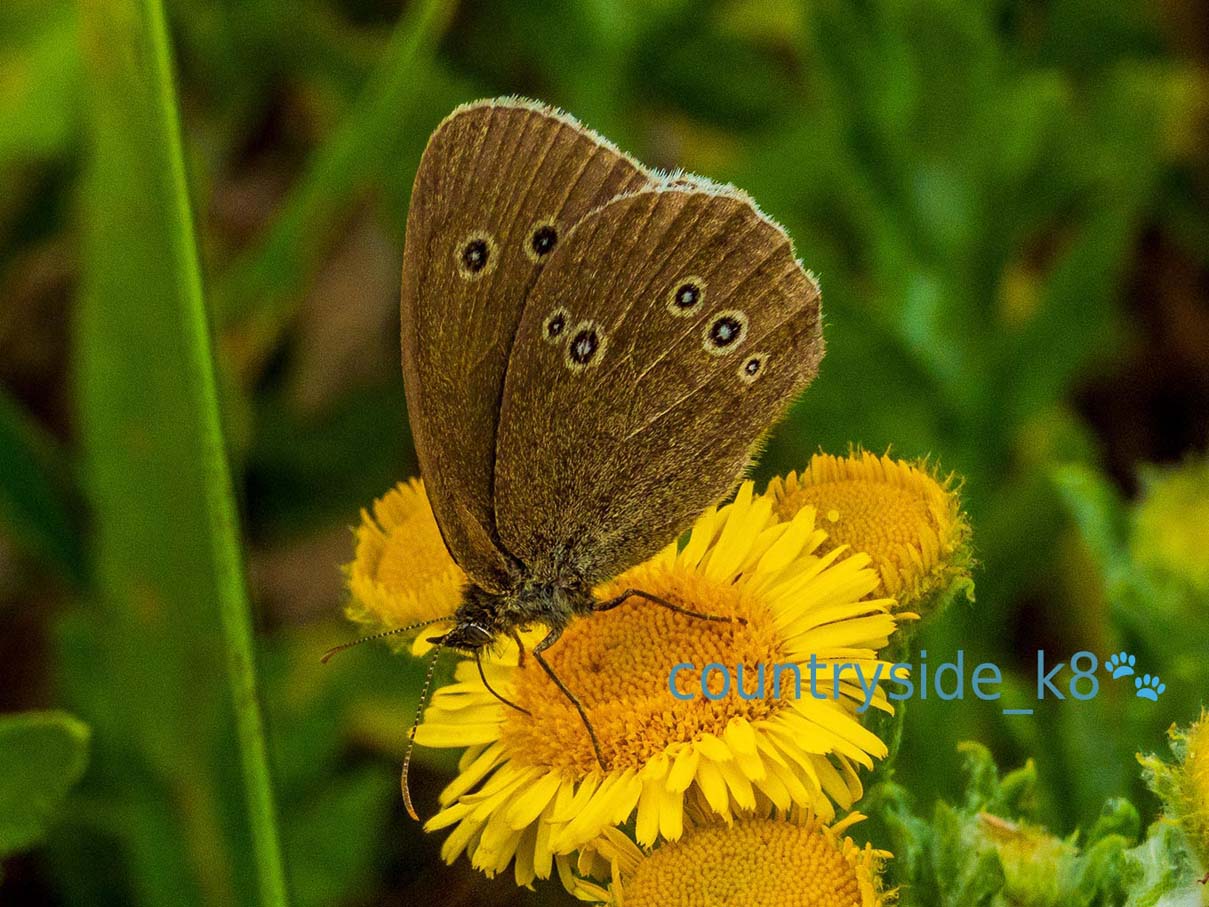
Ringlet (Underside)
Ringlet
Latin name: Aphantopus hyperantus
The Ringlet has is dark brown, with a white margin to the wings and has a soft, velvety appearance. The underside of wings have have small rings, which give the butterfly its name. The rings vary in number and size and can be enlarged and elongated or reduced to small white spots. Occasionally they lack the black ring.
They can be seen in a wide range of places including woodland rides and glades, riverbanks and verges and damp grassland where grasses are lush and tall. In Northern areas it is found in more open and less shady habitats. Its dark colouring means it warms up quickly, making it able to fly on dull, overcast days. They occasionally fly in light rain. The adults fly with a characteristic bobbing flight.
The Ringlet feeds on nectar, with Bramble and Wild Privet flowers being a favourite nectar source. There is one generation each year, with adults emerging in the second half of June and continuing through to August.
The female Ringlet lays her eggs by dropping them from mid-air, onto the undergrowth below.
The larvae feed on a range of coarse grasses, including Cock’s-foot, Common Couch, Tufted Hair-grass, False Brome and meadow-grasses. They over-winter before finally pupating around June.
Ringlets live in large groups, where numbers vary from a few dozen to several thousand.
A common and widespread species in Britain, apart from northern Scotland.
Created: 8 October 2018 Edited: 8 October 2018

by KLS

Brett Gregory is an award-winning filmmaker based in Bolton whose production company, Serious Feather, is currently making a documentary about autism and poetry.
As a part of this production, Landscape Britain was asked to advise with regards to the location of specific areas of outstanding natural beauty throughout the region.
Visit www.seriousfeather.com for further information.


Wild Roe Deer
Own label and private label building products
We produce, brand and supply for some of the biggest names in the industry. Read more...


